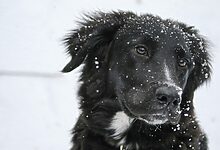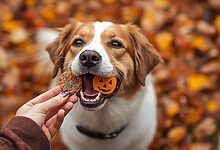Healthy Paws: 10 Pawsome Ways to Keep Your Pup’s Feet Fit
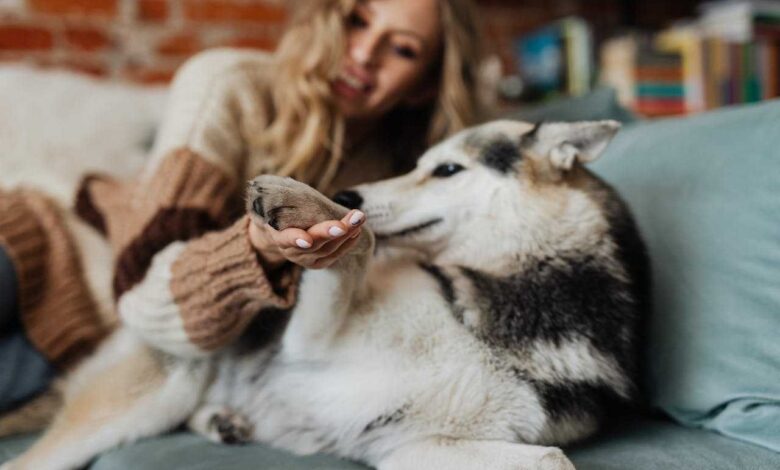
Caring for your dog’s paws is crucial for their overall health and well-being. Paws are sensitive and prone to various issues such as dryness, cracking, infections, and injuries. By understanding how to properly care for your dog’s paws, you can prevent these problems and ensure your furry friend remains comfortable and active. In this comprehensive guide, we’ll cover everything you need to know about maintaining healthy paws for dogs, including grooming tips, treatments, and preventative measures.
Understanding the Importance of Dog Paw Care
Why Dog Paw Care is Essential
Dogs use their paws for virtually every activity, from walking and running to digging and playing. Healthy paws are essential for mobility and comfort. Neglecting paw care can lead to problems such as cracked pads, infections, and pain, which can significantly affect your dog’s quality of life. Regular paw care helps maintain the integrity of the pads and claws, preventing injuries and infections that could otherwise disrupt your dog’s daily activities.
Common Paw Problems
Before diving into specific care techniques, it’s important to recognize common paw problems:
- Cracked Dog Pads: Often caused by dryness, rough surfaces, or extreme temperatures. Cracked pads can be painful and may lead to infections if not treated promptly.
- Dog Paw Infections: Can result from cuts, punctures, or exposure to bacteria and fungi. Symptoms include swelling, redness, and discharge.
- Dog Paw Irritation: May occur due to allergies, chemicals, or environmental factors. Signs of irritation include excessive licking, redness, and swelling.
- Dog Paw Licking: Often a sign of discomfort, which could be due to an underlying issue such as an infection or irritation. Persistent licking can exacerbate the problem, leading to further damage and potential infections.
For a detailed overview of common paw problems and their symptoms, visit PetMD.
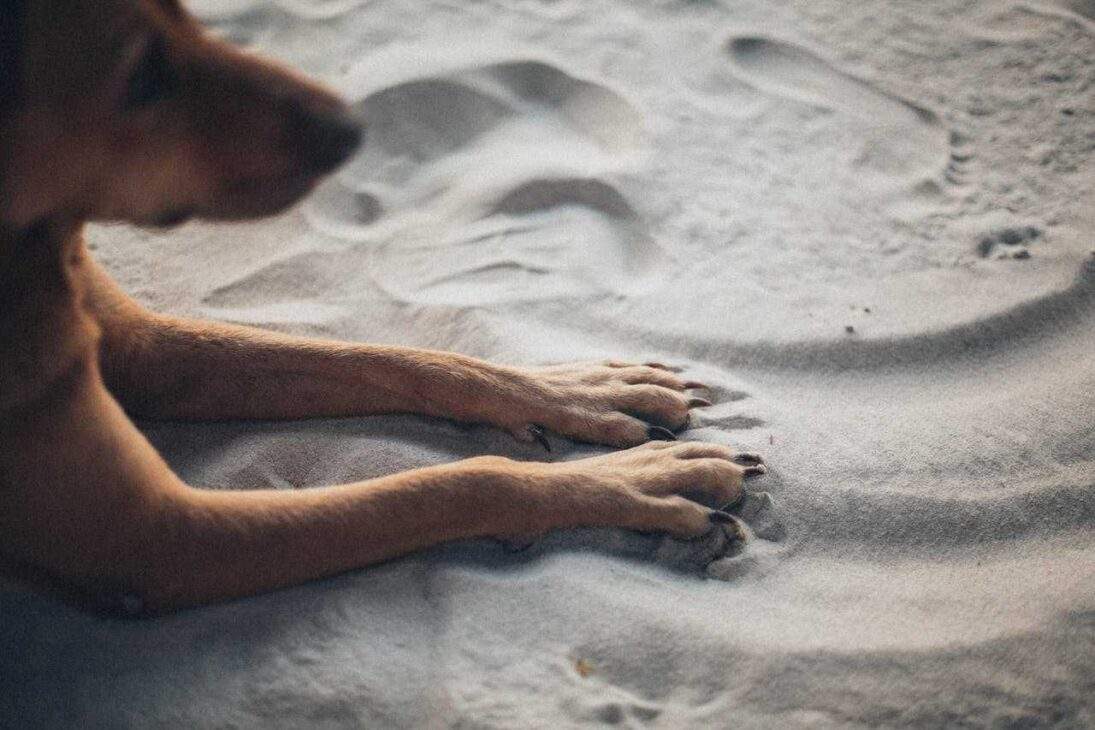
Preventing Dry and Cracked Dog Paws
Causes of Dry and Cracked Paws
Dry and cracked paws can be caused by various factors, including:
- Environmental Conditions: Hot pavement, icy sidewalks, and rough terrain can all contribute to dry, cracked paws. Extremes in temperature can cause the skin to dry out and crack, similar to how human skin can become chapped in harsh weather.
- Chemical Exposure: Salt used for de-icing, lawn chemicals, and cleaning agents can irritate and dry out the paw pads. These chemicals can be particularly harsh on the sensitive skin of the paws.
- Nutritional Deficiencies: Poor diet can affect skin health, including the paw pads. Ensuring your dog receives a balanced diet rich in essential fatty acids, vitamins, and minerals can help maintain healthy skin and pads.
Preventative Measures
Dog Paw Balm
Applying a high-quality dog paw balm can help keep your dog’s paws moisturized and protected. Look for balms with natural ingredients such as shea butter, coconut oil, and beeswax, which can soothe and heal dry pads. These balms create a barrier that locks in moisture and protects against environmental stressors.
Recommended Dog Paw Balms:
- Musher’s Secret: A popular choice among dog owners, Musher’s Secret is made from a blend of natural waxes and is designed to protect paws from harsh conditions.
- Paw Soother by Natural Dog Company: This balm is formulated with organic, plant-based ingredients that help heal and moisturize dry, cracked pads.
Avoiding Harsh Surfaces
Whenever possible, avoid walking your dog on hot pavement or icy surfaces. If you must walk in these conditions, consider using dog booties to protect their paws. Booties provide a physical barrier that shields the pads from extreme temperatures and rough textures.
Regular Moisturizing
Regularly moisturizing your dog’s paws with a paw balm or coconut oil can prevent dryness and cracking. Make it a routine to check their paws and apply moisturizer as needed. This practice not only keeps the pads supple and healthy but also allows you to monitor for any early signs of issues.
Treating Cracked Dog Pads
Home Remedies
If your dog’s pads are already cracked, home remedies can help soothe and heal them. Some effective home treatments include:
- Coconut Oil: Apply a small amount to the affected area and gently massage it in. Coconut oil has natural antibacterial and antifungal properties, making it an excellent choice for treating minor cracks.
- Aloe Vera Gel: Known for its healing properties, aloe vera can provide relief for cracked pads. It helps soothe the skin and promotes healing.
- Vitamin E Oil: Helps in repairing damaged skin and can be applied directly to the cracks. Vitamin E is a powerful antioxidant that supports skin health.
Veterinary Treatment
In severe cases, where cracks are deep or infected, it’s crucial to seek veterinary care. Your vet may prescribe topical antibiotics or other treatments to promote healing and prevent further complications. Deep cracks can become infected if not treated properly, leading to more serious health issues.
For more information on treating cracked pads, visit AKC’s guide on paw care.
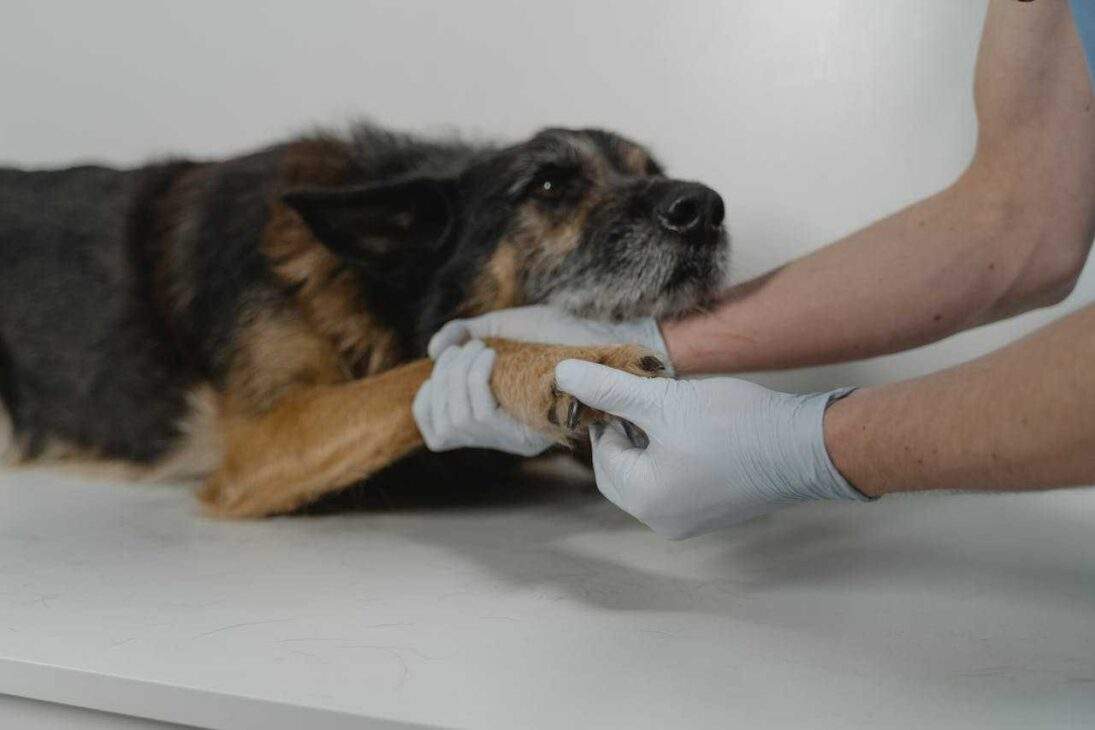
Preventing and Treating Dog Paw Infections
Recognizing Infections
Dog paw infections can result from cuts, punctures, or exposure to harmful substances. Signs of infection include:
- Swelling
- Redness
- Discharge or pus
- Excessive licking or chewing
Preventative Measures
Regular Inspection
Regularly inspect your dog’s paws for cuts, abrasions, or foreign objects. Early detection can prevent minor issues from becoming serious infections. Make it a habit to check their paws after walks or play sessions, especially if they’ve been in rough or unfamiliar terrain.
Cleaning and Disinfection
After walks or playtime, especially in dirty or wet conditions, clean your dog’s paws with mild soap and water. Dry thoroughly to prevent moisture buildup, which can lead to infections. Use a soft cloth or towel to gently clean between the pads and toes.
Treatment Options
If an infection is suspected, clean the affected area with a gentle antiseptic solution and apply an antibiotic ointment. Cover the paw with a clean bandage to protect it from further contamination. It’s important to follow up with your vet for proper diagnosis and treatment if the infection does not improve quickly.
For detailed steps on treating dog paw infections, visit VCA Hospitals.
Dog Paw Grooming: Best Practices
Dog Nail Trimming
Dog nail trimming is a critical aspect of paw care. Overgrown nails can cause discomfort and affect your dog’s gait.
How to Trim Dog Nails
- Use the Right Tools: Invest in a good quality dog nail clipper or grinder. Clippers are effective for quick trims, while grinders can smooth the edges and are less likely to cause splintering.
- Identify the Quick: The quick is the blood vessel inside the nail. Avoid cutting too close to it to prevent bleeding. In light-colored nails, the quick is usually visible as a pinkish area. For dark nails, trim small amounts gradually to avoid cutting into the quick.
- Regular Trimming: Trim your dog’s nails regularly to keep them at a healthy length. Long nails can cause pain and may lead to joint issues. If you’re unsure how to trim your dog’s nails, consult your vet or a professional groomer.
For a step-by-step guide on nail trimming, visit ASPCA.
Dog Paw Hair Trimming
Trimming the hair around your dog’s paws can help prevent matting and reduce the accumulation of dirt and debris.
How to Trim Paw Hair
- Use Blunt-End Scissors: To avoid accidental cuts, use blunt-end scissors or pet-safe clippers. Hold the paw gently and trim the hair around the pads and between the toes.
- Trim Between Pads: Carefully trim the hair between the pads and around the paw to keep it tidy. This helps prevent mats and keeps the paw clean.
For more grooming tips, visit Petco’s grooming guide.
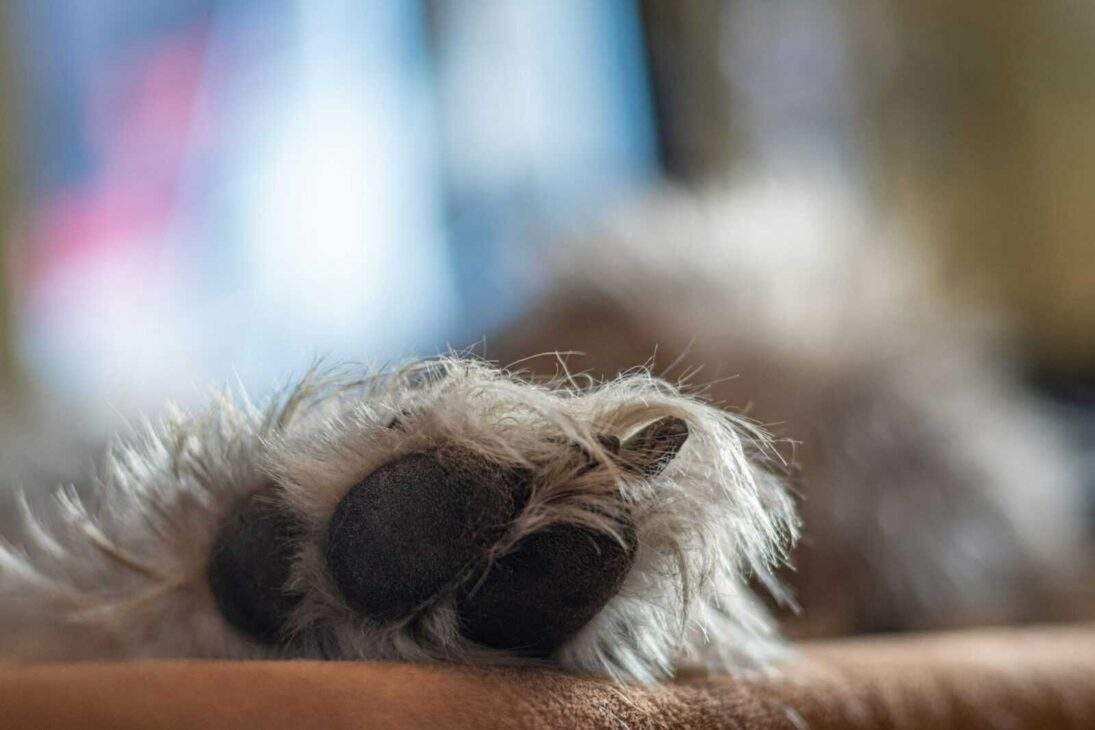
Seasonal Paw Care Tips
Winter Paw Care for Dogs
Winter can be particularly harsh on your dog’s paws due to cold temperatures, ice, and salt used for de-icing.
Winter Paw Care Tips
- Booties: Use dog booties to protect paws from cold and salt. Booties can provide insulation and protect against sharp ice and harsh chemicals.
- Paw Balm: Apply paw balm before and after walks to keep paws moisturized. This helps create a barrier against the elements and prevents cracking.
- Clean and Dry: After walks, clean your dog’s paws with warm water to remove salt and dry thoroughly. Be sure to get between the toes and pads to prevent irritation.
For more winter care tips, visit AKC’s winter paw care guide.
Hot Weather and Dog Paws
Hot pavement can burn your dog’s paws, so it’s important to take precautions during warm weather.
Hot Weather Tips
- Avoid Hot Pavement: Walk your dog during cooler times of the day, such as early morning or late evening. Asphalt and concrete can become extremely hot and cause burns.
- Test the Surface: Place your hand on the pavement for a few seconds; if it’s too hot for your hand, it’s too hot for your dog’s paws. This simple test can help you gauge the safety of walking surfaces.
- Hydrate and Rest: Ensure your dog stays hydrated and take breaks in the shade. Heat can cause dehydration and exhaustion, so it’s important to provide plenty of water and rest periods.
For more tips on hot weather paw care, visit PetMD.
Addressing Dog Paw Licking
Causes of Paw Licking
Excessive paw licking can be a sign of underlying issues such as allergies, infections, or irritations.
Common Causes
- Allergies: Food allergies or environmental allergens can cause itching and irritation. Identifying and managing the allergen can help reduce licking.
- Infections: Bacterial or fungal infections can make your dog lick their paws excessively. Treatment typically involves cleaning and medicating the affected area.
- Injuries: Cuts, splinters, or foreign objects can cause discomfort and lead to licking. Inspect your dog’s paws for any signs of injury.
Treatment and Prevention
- Identify the Cause: Determine the underlying cause of the licking and address it accordingly. This may involve dietary changes, medication, or environmental adjustments.
- Use a Cone: If your dog won’t stop licking, use an Elizabethan collar to prevent further irritation and allow the area to heal. This can be especially helpful in preventing self-inflicted injuries.
- Consult Your Vet: Persistent licking should be evaluated by a veterinarian to rule out serious conditions. Your vet can provide appropriate treatment and guidance.
For more information on addressing paw licking, visit VCA Hospitals.

Dog Paw Infection Treatment
Recognizing and Treating Infections
Infections can cause significant discomfort and require prompt treatment.
Symptoms of Paw Infections
- Swelling
- Redness
- Discharge or pus
- Pain or sensitivity
Treatment Options
- Clean the Area: Gently clean the infected area with an antiseptic solution. This helps remove dirt and bacteria that could worsen the infection.
- Apply Antibiotic Ointment: Use a vet-recommended antibiotic ointment to treat the infection. This helps kill bacteria and promote healing.
- Bandage the Paw: Protect the area with a clean bandage to prevent further contamination. Change the bandage regularly to keep the wound clean and dry.
When to See a Vet
If the infection does not improve within a few days, consult your vet for further treatment. Severe infections may require oral antibiotics or other interventions.
For more on paw infection treatment, visit VCA Hospitals.
Dog Nail Trimming: A Step-by-Step Guide
Importance of Nail Trimming
Regular dog nail trimming is essential for paw health. Overgrown nails can cause pain, affect your dog’s gait, and lead to other health issues.
Tools Needed
- Dog Nail Clippers or Grinder: Choose the tool that you and your dog are most comfortable with. Clippers are effective for quick trims, while grinders are useful for smoothing edges.
- Styptic Powder: In case you cut too close to the quick, styptic powder can help stop any bleeding.
Trimming Process
- Calm Your Dog: Ensure your dog is calm and comfortable before starting. Use treats and positive reinforcement to create a positive experience.
- Hold the Paw Gently: Hold your dog’s paw firmly but gently. Ensure they feel secure and relaxed.
- Identify the Quick: In light-colored nails, the quick is visible as a pinkish area. For dark nails, trim small amounts gradually to avoid cutting into the quick.
- Trim the Nail: Cut the nail at a slight angle, just below the quick. If using a grinder, gently file the nail down.
- Reward Your Dog: Give your dog a treat and praise to reinforce positive behavior.
For a detailed guide on nail trimming, visit ASPCA.
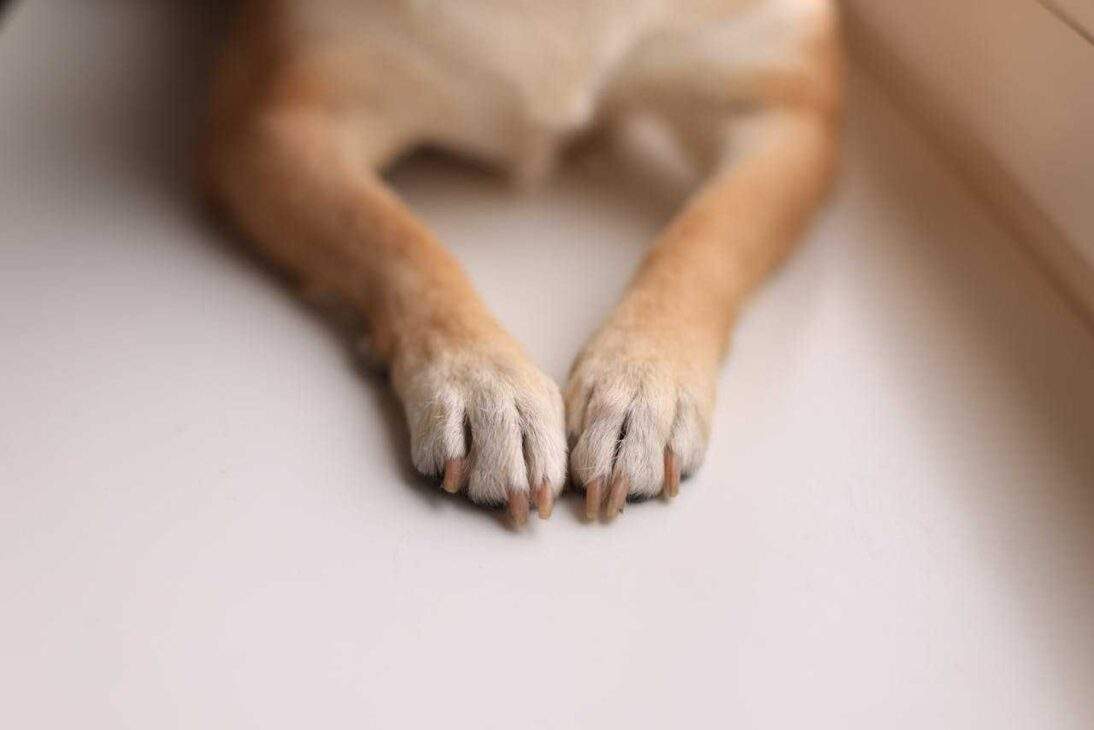
Dog Paw Hair Trimming
Benefits of Paw Hair Trimming
Trimming the hair around your dog’s paws can prevent matting and reduce the accumulation of dirt and debris.
Tools Needed
- Blunt-End Scissors or Pet-Safe Clippers: These tools help avoid accidental cuts.
- Comb: A comb helps detangle hair and make trimming easier.
Trimming Process
- Comb the Hair: Use a comb to detangle the hair around the paws.
- Trim Around the Pads: Carefully trim the hair around the pads and between the toes. This helps keep the paws clean and reduces the risk of matting.
- Regular Maintenance: Regularly trim the paw hair to maintain cleanliness and prevent issues.
For more grooming tips, visit Petco’s grooming guide.
Healthy Paws
Maintaining healthy paws is essential for your dog’s overall health and well-being. By following the tips and recommendations outlined in this guide, you can ensure your dog’s paws remain in top condition. Regular grooming, moisturizing, and preventative care can prevent common issues such as dryness, cracking, and infections. Additionally, being attentive to seasonal challenges and addressing any signs of irritation or discomfort promptly will help keep your furry friend’s paws healthy and happy.
For more comprehensive pet care resources, visit trusted websites such as PetMD, AKC, and ASPCA.
FAQ: Common Questions About Healthy Paws
1. How often should I trim my dog’s nails?
Regular nail trimming should be done every 3-4 weeks, depending on your dog’s activity level and nail growth. Consult with your vet or groomer for personalized recommendations.
2. What should I do if my dog’s paw pads are cracked?
Apply a dog paw balm or coconut oil to moisturize the pads. If the cracks are severe or infected, consult your vet for appropriate treatment.
3. How can I prevent my dog from licking their paws excessively?
Identify and address the underlying cause, such as allergies or infections. Using an Elizabethan collar can prevent licking and allow the area to heal.
4. Are dog booties necessary?
Dog booties are beneficial in extreme weather conditions, such as hot pavement or icy surfaces. They provide protection and comfort for your dog’s paws.
5. How can I keep my dog’s paws clean?
Regularly inspect and clean your dog’s paws with mild soap and water. Ensure they are thoroughly dried to prevent moisture buildup.
6. What is the best way to treat a paw infection?
Clean the area with an antiseptic solution, apply antibiotic ointment, and cover with a clean bandage. Consult your vet for further treatment if needed.
7. Can I use human lotion on my dog’s paws?
It’s best to use products specifically designed for dogs, such as paw balms. Human lotions may contain ingredients that are harmful to dogs.
8. How do I know if my dog has an allergy causing paw problems?
Common signs of allergies include itching, redness, and swelling. Consult your vet for allergy testing and management options.
9. What are the signs of a serious paw injury?
Signs of a serious injury include severe swelling, bleeding, limping, and visible wounds. Seek immediate veterinary care if you notice these symptoms.
10. How can I protect my dog’s paws from hot pavement?
Avoid walking on hot surfaces, test the pavement temperature with your hand, and consider using booties for protection.


